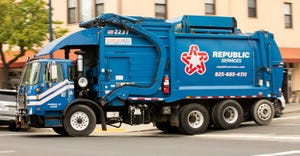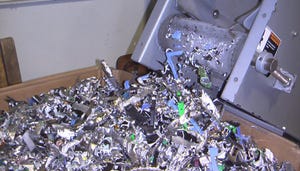N.J. Mayor Seeks To Reduce Waste
November 1, 1993
WORLD WASTES STAFF
WW: What incentives do you support to minimize waste?
SJ: Citizens, businesses and government all need to work at minimizing waste. All products should be manufactured with the full life-cycle costs already included in it. Some parts of Canada, the Netherlands, Germany, Austria and France have adopted legislation that requires the industry that produces packaging to take it back. This shifts the burden of funding recycling collection from the municipality onto the manufacturer, who hopefully will find incentives to reduce packaging.
German legislation has resulted in source reduction. In 1992, in anticipation of the recycling law, German manufacturers source-reduced packaging by 1.1 billion pounds more than in 1991. About 132 million pounds in reduction alone came from plastics.
WW: How would you avoid the problems encountered by Germany's Dual System? (For example, flooding European recycling markets.
SJ: The success of Germany's newly adopted packaging legislation is criticized because of the glut of material and lack of domestic markets. For example, let's examine paper. As exports of United States scrap paper have weakened, the glut of fiber in Europe - Germany in particular - has been blamed for much of the problem.
Since German wastepaper exports outside of Europe increased from 79,000 metric tons in 1991 to 223,000 metric tons last year, skeptics say that Germany can't export enough recovered paper to significantly impact U.S. business. Germany exported approximately 300,000 tons of paper in 1992. This compares to approximately 1.1 million tons of wastepaper exported in 1992 out of Port Newark alone.
It is necessary to increase local and foreign demand, but just because the German program is collecting large quantities of materials does not mean failure. In the United States, total paper mill utilization of wastepaper in 1992 was only 31.2 percent. The United States falls behind 15 other countries in the percentage of wastepaper which is used domestically.
WW: How has the City of Newark achieved a recycling rate of more than 50 percent?
SJ: The City of Newark has achieved a recycling rate of more than 50 percent through education and enforcement campaigns. Newark, a city of only 24 square miles, is fortunate to have more than 80 businesses - large and small - which process or manufacture new commodities from what used to be waste. Newark views solid waste as a commodity which has value that needs to be utilized.
Newark also has a port. If we cannot use the materials locally, we can ship it to other domestic markets or to overseas markets.
WW: What recycling legislation does the USCM Solid Waste Task Force support?
SJ: The task force is evaluating possible legislation that will reinvent recycling in the United States. We are working with Congress to find solutions for the problems of recycling.
A virgin materials tax, the Green Dot System, a shared responsibility system like that in Ontario, a secondary materials trust fund and minimum content regulations are alternatives we are considering.
WW: What is the Solid Waste Task Force doing to develop markets for recyclables?
SJ: USCM sponsors campaigns such as "Buy Recycled" and the "Office Paper Challenge." We hope to triple municipal and industry office paper recycling in less than three years through the office paper challenge. We have also started a municipal solid waste compost project to evaluate technologies and markets for compost.
WW: In addition to recycling, which solid waste management issues do you find to be most important to today's solid waste managers?
SJ: The most important waste management issues today include waste minimization privatization and disposal options such as waste to energy and landfilling.
You May Also Like


